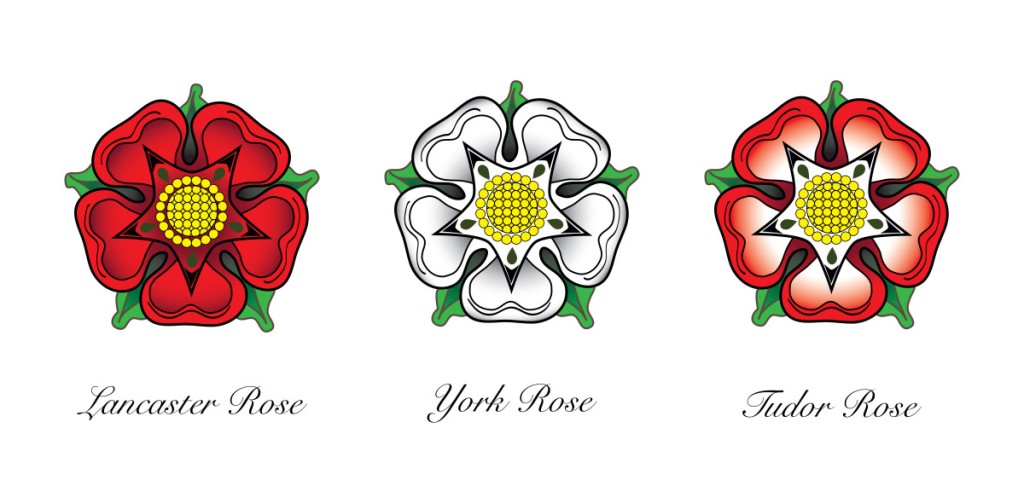
For today’s post I would like to look at some of the parallels between the stories of Elizabeth Woodville and Anne Boleyn! I have written about both of these queens multiple times, and I thought looking at them both would be an interesting post. Elizabeth Woodville was the first “commoner” queen of England. Anne Boleyn would be the next one, and would marry Elizabeth Woodville’s grandson (through her eldest daughter, Elizabeth of York) Henry VIII. Henry VIII was always said to take more from his York ancestors, in particular his grandfather Edward IV (who was husband to Elizabeth Woodville).
Now let’s start from the beginning in this comparison. Both Elizabeth and Anne were born to good families, but not royal families. Elizabeth had a mother who had been born noble, and was one time Duchess of Bedford (but then married a mere squire, making their children commoners). Anne had a mother from the prestigious noble family, the Howards. Anne’s father was wealthy and from a powerful merchant family (but he was not noble or royal, making his children also technically commoners).
Both Elizabeth and Anne had families that would be seen as social climbers, helped by their connection to the crown. The Woodvilles gained good marriage matches based on Elizabeth and Edward choosing good Yorkists to marry her siblings off to. The Boleyns gained a lot of power, first with Thomas Boleyn gaining favor in the court of Henry’s father, and then keeping it with the young king he had befriended. Later Henry VIII lavishing attentions upon both Boleyn daughters made the family more powerful. The king quickly tired of Mary Boleyn, but Anne kept his attention, and he would set his sights on making her his new queen!
Both Elizabeth and Anne were not favored to be a queen, especially given that they were not born princesses. Elizabeth was a widow, was five years the king’s senior, Lancastrian originally, and had two young sons. All of this seemed to place doubt on her ability to be a queen, however the fact that she had already proven her fertility, and that she was also known to be the most beautiful woman in England in her day made up for some of this! Anne was not favored because she was taking the place of a beloved queen, and she was seen as a flirt and harlot. However, her style and intellectual wit made her a flame that drew in moths (the king included)!
Both Elizabeth and Anne were accused of using witchcraft to seduce their kings. This was largely due to the fact that the way they enamored their royal lovers was seen as impossible without the use of black magic! It was an easy way to think of these unique woman in newly powerful circumstances. Unfortunately for Anne as Henry’s paranoia grew, she ended up having her husband believe this accusation and many more about her!
Both Elizabeth and Anne would give birth to daughters first by their royal spouse. Both of those daughters would be named Elizabeth. In fact Elizabeth I (daughter of Anne Boleyn) was named in honor of the king’s mother, who was that same daughter of Elizabeth Woodville! The stories diverge here since Elizabeth bore nine more children to her husband, including two sons who became the Princes in the Tower.
Now that Tower connection is the final point I would like to make about parallels between these two great queens! Elizabeth Woodville had her sons taken from her and imprisoned in the Tower by their uncle Richard, Duke of Gloucester (who would steal the crown from his nephew to become Richard III). Anne Boleyn has an infamous Tower connection since she was beheaded on Tower Green on May 19, 1536, after spending the last weeks of her life imprisoned there! Both the Princes and Anne Boleyn are said to haunt the Tower to this day, making the connection between the queens even deeper, and more melancholy. Elizabeth would outlive her husband and sons, but did live to see her daughter crowned queen, and the birth of some of her grandchildren before her death in Bermondsey Abbey in 1492. So in the end of our tales, neither queen ended life happily, with one executed and the other having her crown ripped from her (as well as losing her beloved husband and sons)!
I hope you have enjoyed my comparison of the stories of Elizabeth Woodville and Anne Boleyn. These queens are still sometimes maligned, and I hope this post helped give some interesting perspective. Let me know your thoughts in the comments below!
Note on Image: The image at the top of the post is the roses of York, Lancaster, and Tudor. I found the image on history.com.
Further Reading
- Elizabeth: England’s Slandered Queen by Arlene Okerlund
- Elizabeth Woodville by David MacGibbon
- The Lady in the Tower by Alison Weir
- Anne Boleyn by Amy Licence
